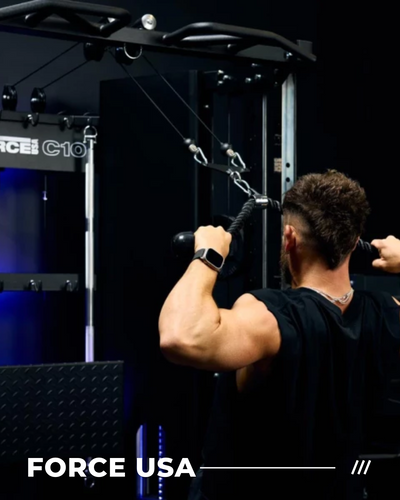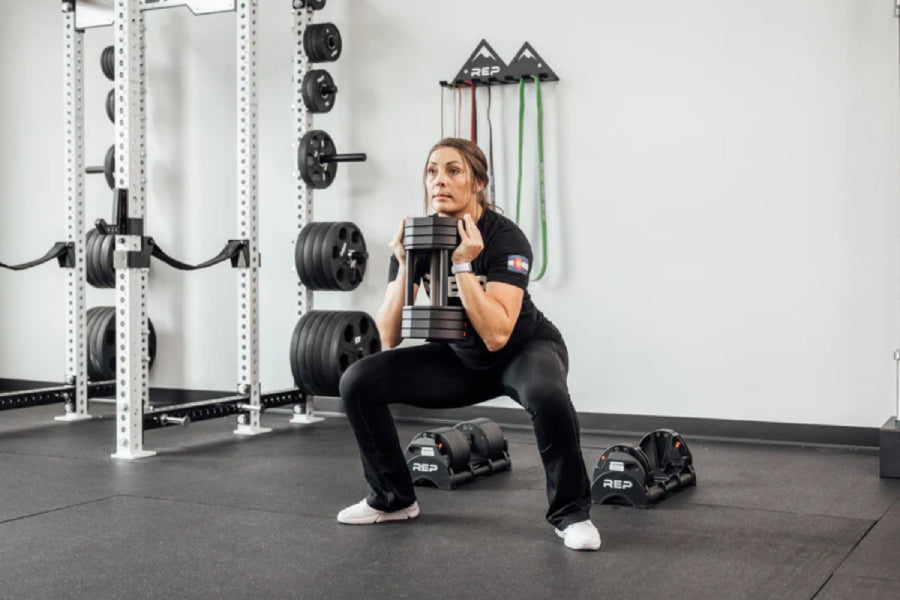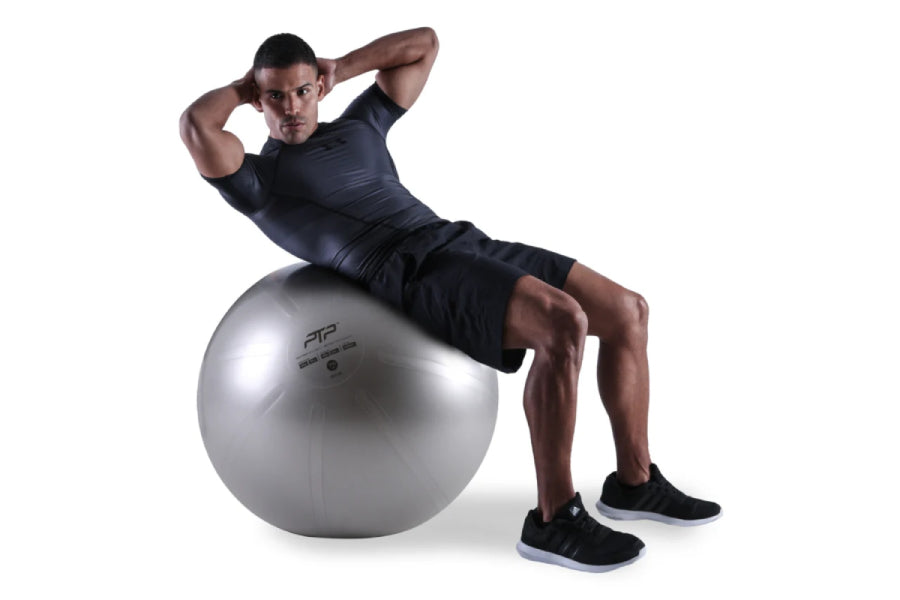5 Tips For Getting Back In Shape After A Long Fitness Break
GYMSPORTZ PTE LTD | 2 Sep 2025

Returning to fitness after a prolonged break can feel intimidating. Whether you’ve been sidelined by illness, a busy schedule, or simply lost motivation, getting back into shape requires patience, strategy, and a clear plan. Without a thoughtful approach, many people risk injury, burnout, or frustration. Fortunately, with the right mindset and tools, you can ease back into a fitness routine safely and effectively.
Here are five practical tips to guide you on your journey to regaining your fitness levels.
1. Start with low-impact cardio
After a long hiatus from exercise, it’s tempting to jump straight into high-intensity workouts. However, doing too much too soon can strain your muscles, joints, and cardiovascular system, leading to potential injuries. A smarter approach is to begin with low-impact cardio exercises that help rebuild your stamina gradually.
An elliptical trainer is a perfect choice for this stage. It provides a smooth, controlled motion that mimics running but without the harsh impact on your knees, hips, and ankles. This type of cardio engages both your upper and lower body, ensuring a comprehensive workout while keeping stress on your joints minimal. Start with short sessions of 15 to 20 minutes and gradually increase the duration and intensity as your endurance improves.
Other low-impact options include brisk walking, cycling on a stationary bike, or swimming. These exercises help increase your heart rate, improve circulation, and recondition your cardiovascular system without overexerting your body. Consistency is key at this stage, so aim for at least three to four sessions per week.
2. Incorporate strength training with resistance bands
Strength training is essential after a fitness break because it helps rebuild muscle mass, enhances metabolism, and supports joint health. For beginners or those returning after a hiatus, resistance bands are an excellent tool. They are versatile, affordable, and allow you to perform a wide variety of exercises targeting all major muscle groups.
You can start with basic movements like bicep curls, shoulder presses, seated rows, and leg extensions using resistance bands. These exercises provide sufficient resistance to stimulate muscles without the heavy load of free weights. As your strength improves, you can increase the resistance level or combine band exercises with bodyweight movements for a more challenging routine.
Bodyweight exercises such as squats, lunges, push-ups, and planks are also highly effective for regaining strength. These exercises can be done at home and allow you to focus on proper form, which is crucial to avoid injury. Strength training twice or thrice a week is a good starting point, gradually increasing frequency as your body adapts.
3. Set realistic goals and track progress
A long break from fitness can make it tempting to set overly ambitious goals, such as returning to your peak performance in a few weeks. Setting unrealistic expectations can lead to disappointment and may even cause injuries. Instead, focus on achievable, incremental goals that gradually build your strength and endurance.
Begin with small milestones, such as completing a 10-minute workout each day, walking 5,000 steps, or performing a certain number of repetitions for each exercise. Gradually increase your goals over time, for example by adding five more minutes to each session or increasing the resistance in your strength exercises.
Tracking your progress can be highly motivating. You can use a fitness journal, smartphone apps, or wearable devices to record your workouts, monitor improvements in endurance and strength, and celebrate small wins. Regularly reviewing your progress helps maintain motivation, reinforces positive habits, and makes it easier to adjust your program based on your evolving fitness level.
4. Prioritise recovery and listen to your body
One of the most overlooked aspects of returning to fitness is recovery. Rest days allow your muscles to repair, grow, and adapt to the stress of training. Without adequate recovery, you may experience fatigue, soreness, or even more serious injuries.
Pay attention to how your body feels during and after each session. Muscle soreness is normal, especially in the early stages, but sharp or persistent pain may indicate an injury or overexertion. Modifying your routine or seeking guidance from a professional can prevent setbacks.
Incorporate techniques to support recovery, such as stretching, foam rolling, or yoga. These practices improve flexibility, reduce muscle tension, and enhance circulation. Adequate sleep and a balanced diet are equally important. Protein supports muscle repair, carbohydrates provide energy, and healthy fats assist overall cellular function. Hydration also plays a critical role in recovery, so make sure to drink enough water throughout the day.
5. Stay consistent and be patient
Consistency is the cornerstone of long-term success. Returning to fitness after a break is rarely a linear journey. There will be good days when you feel strong and motivated, and others when progress seems slow. Accepting this as part of the process is crucial.
Establishing a routine that fits your lifestyle is one of the best ways to maintain consistency. Schedule workouts at times when you are most likely to stick to them, whether that is early morning, during lunch breaks, or in the evening. Treat these sessions as non-negotiable appointments with yourself.
Patience is equally important. Remember, your body has likely adapted to a lower activity level over time, so expecting instant results is unrealistic. Celebrate small victories, such as completing your first week back, increasing your repetitions, or noticing improved energy levels. Over time, these small achievements accumulate, resulting in significant improvements in strength, stamina, and overall health.
Additional tips for success
Beyond the main strategies, consider incorporating these supplementary tips for a smoother transition back to fitness:
• Mix up your workouts: Alternating between cardio, strength training, and flexibility exercises keeps your routine engaging and reduces the risk of overuse injuries.
• Workout with a partner: Exercising with a friend can boost motivation, accountability, and enjoyment.
• Invest in proper equipment: Even simple tools like an elliptical trainer or resistance bands can make a big difference in providing effective, safe workouts at home or at the gym.
• Monitor your nutrition: Eating nutrient-dense foods fuels your workouts and aids recovery, ensuring your body has what it needs to adapt and improve.
• Celebrate progress, not perfection: Focus on how far you’ve come rather than comparing yourself to your previous peak fitness level or others.
Conclusion
Getting back in shape after a long fitness break is a journey that requires dedication, patience, and the right approach. By starting with low-impact cardio, incorporating strength training with resistance bands, setting realistic goals, prioritising recovery, and maintaining consistency, you can rebuild your fitness safely and effectively.
At Gymsportz, we provide a wide range of high-quality fitness equipment to support every stage of your fitness journey. From elliptical trainers to versatile resistance bands, our collection helps you regain strength, endurance, and confidence. Explore Gymsportz today and take the first step towards achieving your fitness goals with the right tools and guidance. Your journey back to health and vitality starts now.







